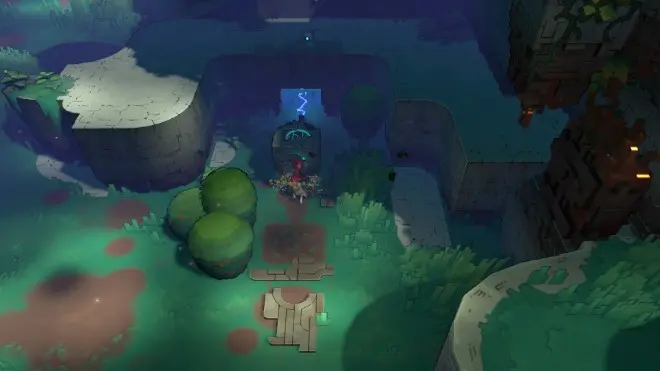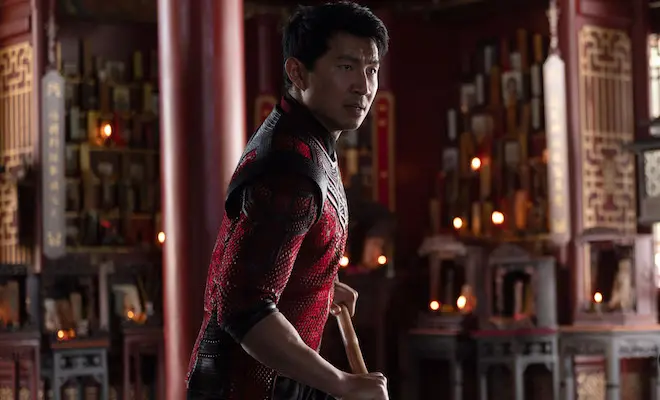While playing Hob, it’s hard not to drawn comparisons to some of the older Zelda titles. A big world filled with puzzles to solve and upgrades to find, and I know I’ll get some flak for this, but I honestly wasn’t a big fan of Breath of the Wild. A lot of the things people seemed to love about it, were what ultimately pushed me away. Runic Games, developers of the excellent Torchlight, have filled that hole in my heart with Hob.
Hob follows an unnamed protagonist as he explores his world, a world in disarray. It’s honestly really hard to talk about the story because, well, there is none. The exploration in Hob IS the story. The beautiful world our protagonist inhabits is being overrun by a purple goo. Early in the game, he ends up getting touched by this goo, and it begins to overtake his body. A robotic golem jumps to his aid, however, and quickly cuts off his arm. This robot gives our main character his robotic arm, and they set off on their journey.
After that, the journey is what the player makes of it. Other than giving players a general direction of where to head, theres very little telling you where to go or how to do it. Your robotic companion leaves you alone for the most part. In between the larger sections of how the game is broken up, he might appear for a moment or two and point you the right way. However, there’s plenty of interaction between the two during these moments but there is no dialogue in Hob. They make noises, but the lack of dialogue helps make some nice moments between our companions and the world around them. Also, the world is absolutely gorgeous. The bright colorful aesthetic of Hob is stunning, and helps make exploring all the more engaging.
As players explore, there aren’t just puzzles scattered throughout the environments and dungeons. Instead, the puzzles are the environment. Interactive panels can twist and shape the environments, or cause mountains and rivers to rise or fall. Watching some of the mountain ranges twist and fall into place almost made me feel like I was playing an M.C. Escher video game. That being said, none of the puzzles were all that challenging. Once players know which direction to head, most of the puzzles involve flipping switches or dragging blocks around to specific points. None of them felt difficult, but solving them always felt rewarding.
The biggest problem with Hob is the fixed camera. For a game built around exploration, it felt hard to search every nook and cranny for secrets. This played an especially big role with the platforming sections, and I often found myself flying off ledges or missing jumps because I couldn’t tell where I was going to land. As I was swimming and exploring a water filled area, I ended up swimming behind a ledge and getting stuck on something. Because of the fixed camera, I ended up having to force respawn and lose progress because I couldn’t tell what was happening.
The platforming sections of Hob are all built around the main characters robotic arm. Throughout your journey, players will find armaments. These are essentially upgrades for your arm and vary between a ground slam and a grapple hook. Each new dungeon and area players explore are built around the new upgrades for the arm, and build upon the skills earned by using the previously found upgrades. It’s also not just the platforming sections that are built around the arm’s upgrades either. All of the puzzles in each new area players visit are built around the new upgrades as well. From using your grappling hook to navigate a cliff face, or using your arm to power up terminals. Again, the puzzles are never difficult, but they’re still a lot of fun to solve.
The combat in Hob is simple, but still intuitive and smooth. Most of the combat revolves around one attack button, which swings a sword. As players explore the world and defeat enemies, they drop currency that can be used to upgrade abilities and weapons. Upgrades can be an extra sword swing, or just more power to a specific attack. On top of this are upgrade schematics that are found while exploring. These upgrades are a bit more substantial, and add extra abilities to your arm’s upgrades that are helpful specifically for combat and don’t do anything for the puzzle or platforming parts. My biggest complaint with the combat is the lack of memorable fights. There’s a wide variety of enemies to fight, but there aren’t boss fights in any of the areas you explore.
While there aren’t many technical bugs, there were still a few present in Hob. At one point while controlling a mechanical platform, I went back to the Playstation menu. When returning to Hob the game launched me through the bottom of the level. Another time, I activated a switch and it came back and hit my character in the face and launched me through the bottom of the level again. These technical issues were few and far between, but ended up setting me back a few hours total in exploration, so they’re worth mentioning.
Hob is a beautiful exploration game with plenty of puzzles to solve and secrets to find. A lack of memorable fights and a few technical issues are the only things that keep Hob from the kind of greatness achieved by other Zelda-like explorers in the past. Anyone disappointed by Breath of the Wild should keep Hob on their radar, because the world and exploration is the reason to keep coming back for more and more.
Hob is available now on PlayStation 4, and PC. This review is based on an Playstation 4 copy provided by the publisher for that purpose.










